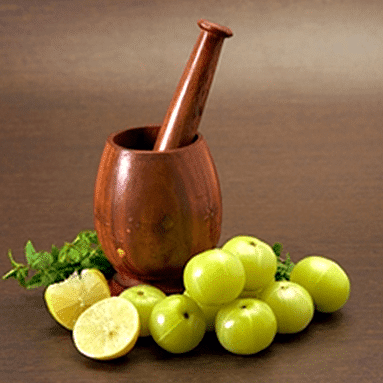You must heard a name amla but you don’t know how it good for us:
Amla or Gooseberry is a vibrant green color fruit recognized by its succulent, sour and bitter taste. It belongs to Phyllanthaceae family. Amla tree is medium in size and the fruits generally grow in autumn season. This tree has cultural and traditional significance and is worshiped in India by Hindu community. In Ayurveda it is described as a nature’s gift to mankind. This is believed that it has the ability to cure any disease and also increases lifespan. Amla is often consumed raw or used as an ingredient in various pickles, juices and sweets. Let us have a look at the nutritional and health benefits of amla fruit.
- It’s good for hair
- It’s good for skin
- Good for brain
- Reduces cholesterol
- Good for weight loss
- Best medicine for diabetes
- Amla is anti inflammatory-prevents osteoporosis and arthritis
Amla benefits in Ayurveda:
Ayurvedic medicines use amla fruit extensively. Almost all the parts of amla tree namely fruit; seed, branches, flowers and barks are utilized to make medicines. In Ayurveda it is said that amla provides cooling effect to the body, purifies blood, enhances digestion, prevents cold and cough, inhibits asthma, promotes heart health, boosts immunity and protects your heart.
Amla consumption can enhance reproductive organs both in men and women. For women, amla increases the ability to conceive, improves fertility, relieves menstrual cramps and strengthens uterus. In the case of men it is said to improve sperm quality.
Protein synthesis is improved by amla intake. Anyone trying to build lean muscle and strengthen his muscle must go for it. It is highly recommended for athletes.
People suffering from Diarrhea must take amla. Mash amla fruit and boil it in water. Strain the water and take it with sour milk to prevent dysentery.
Decoction of the roots of amla tree can also be consumed as they have astringent properties i.e. they help in shrinking body tissues thus relieving from diarrhea. Amla leaves can even be taken with honey to prevent this disease.
Gonorrhea is a sexually transmitted disease caused by bacterial infection. Bark of amla tree along with turmeric and honey is recommended to treat it.
Other Health Benefits Of Amla:
- Amla is a source of Vitamin-C which makes it a mighty medicine against cough and cold. Its intake can provide immunity to the body and helps in reducing flu and throat infection.
- Amla can be helpful in preventing mouth ulcers. Rinsing with amla juice can reduce the occurrence of it.
- Amla is a stress reliever and can help in inducing sound sleep.
- Amla helps in improving memory and improves cognitive functions. It also aids in improving central nervous system of the body.
- It aids in proper functioning of liver and urinary system.
- Amla juice can be consumed to strengthen teeth and prevent bad odor.
- It is a natural detoxifier and can aid in cleansing the liver and kidney.
- It can be consumed by people having thyroid problems.
- Amla juice can be consumed by men to prevent impotency and erectile dysfunction.
Various ways of consuming Amla:
Amla is most effective when consumed empty stomach. So, either have it raw or make juice of amla by squeezing it and drink half a glass amla juice. Otherwise you can consume amla or its juice in the afternoon.
Amla murabba can also be prepared and consumed to reap its benefits. Often people don’t like the sour taste of amla and thus avoid eating it entirely. But looking at the significant health benefits of amla it is essential to have it in one way or other. Amla murabba is prepared by boiling amla in water and adding sugar. The dish is really mouthwatering but don’t overdo it. Consume 1 amla murabba during afternoon.
One can go for packaged amla juice bottles as amla is not available whole round of year. There are few authentic brands selling pure amla juice in the market. Even amla tablets are available. Consult your doctor and get these tablets prescribed.
Amla pickles are prepared which can also be consumed. Many people cut amla into small pieces and sundry them. These dried amla are mixed with salt and stored and consumed time to time.

